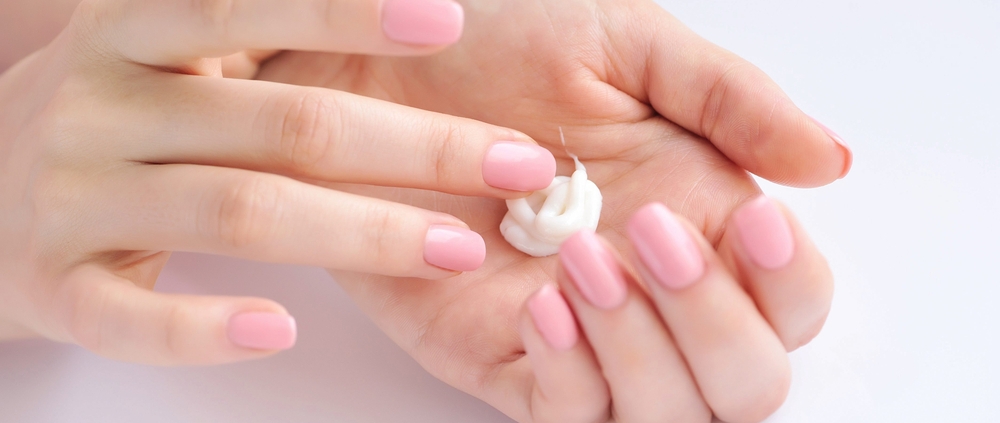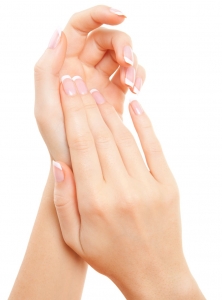The best treatments for your hands
Your hands tell a story and like all stories, they can reveal much about who you are, what you do, how healthy you are and of course, how old you are. Anatomically, your hands are the first thing people notice (through waving, a handshake) after your facial features.
When it comes to our face, our anti-ageing routine is a well-oiled machine: sunscreens, hydrating creams, wrinkle-reducing serums and the whole nine yards. Our hands? Not so much. In fact, we do not give our hands a second thought until they start showing ostensible signs of ageing that very soon clash significantly with the more youthful look of our facial features.
There are many factors contributing to the skin of our hands ageing faster than the skin on any other part of our body:
- On the back of the hands, the skin is very thin by nature and does not contain much fat. As the normal ageing process takes place, collagen and elastin break down over time. In body areas where the skin is very thin, or when the skin becomes very thin due to illness for instance, the breakdown of the already very thin layer of collagen and elastin fibres has a very pronounced and noticeable impact on your hands
- As fat and connective tissue (made up of collagen and elastin fibres, among other things) are lost, the skin starts to look thinner and transparent. Veins become more prominent, and in some cases actually appear to be bulging.
- Brown spots start appearing. The funny thing about age spots is that they actually have nothing to do with age. They are the result of sun exposure and since our hands are exposed all the time, brown spots become almost unavoidable and do contribute to the skin on the hand looking ‘old’.
- How and how quickly your hands show your age is not all doom and gloom. With a bit of awareness and diligence, a few simple but effective hand-care strategies can help us preserve or maintain a youth-looking hand skin and healthy nails.
By hand-care we mean how we look after and take care of our hands. So when considering a hand-care routine, we should start from where it all starts: our daily routine. What we’ll find is that most of the time, at-home hand-care is limited to the regular washing of our hands, usually with a harsh detergent (dish-washing liquid, soap, scrub) sometimes followed by the application of a hand moisturiser. This is enough as far as hygiene and basic care are concerned but to maintain or give your hand a more youthful appearance more targeted and consistent care is needed.
1) Moisturise
Your hands need more moisture than any other part of your body because they are exposed to the elements much more and they tend to get washed frequently with products that tend to damage the skin’s protective oil mantle.
Because moisturisers work more effectively when applied on damp skin, apply it right after hand wash. Each time you apply a face serum or moisturiser you can also rub the excess onto the skin of your hands without forgetting the cuticles. Do the same when you exfoliate your face, use the excess product to exfoliate the skin at the back of your hands rather than waste the scrub on a terry towel or tissue.
When you apply a cream to your hands also include your nails in the routine. Simply lightly massage some of the cream into the edges of the nails to treat them at the same time. Check Phyt’s certified organic Hand & Nails Cream.
While a moisturiser will not create new collagen, it will leave the skin of your hand looking plumper and more youthful. Select a hand cream that contains nourishing and protecting ingredients.
2) Sun protection
Repeated sun exposure without protection can lead to early signs of ageing of the hands, such as dark brown spots. People spending a lot of the time driving are often seeing the early appearance of dark spots. The best way to keep your hands looking young is to avoid direct sunlight. Each time you go out, remember to apply a good sunscreen at least 30 minutes before exposure; and reapply as often as necessary. If you drive a lot in sunny climates, wear driving gloves.
3) Always remember your nails and cuticles
Healthy nails are part of youthful hands. Pay attention to signs of yellowing, fungus or dark spots on the nails. If you use nail polish, consider giving your nails a break by letting them free of polish for a few days and use this time to pamper them.
Cuticles are also a key part of nail health because they protect your nails. Cutting your cuticles can lead to infections as well as painful and unsightly wounds; and it makes the skin grow back rougher and more uneven.
To keep your cuticle soft use a quality cuticle cream and/or oil. If you use a cuticle oil, put a tiny drop of oil on the base of each nail and gently rub the oil into the skin around the nail. You can also gently push back the skin surrounding the nails with a little orange or wooden stick of the like you find at the chemist or supermarket to really get the oil under the cuticles.
For a deep treatment, you can massage the oil into the nails in the evening before going to bed, then apply a hand cream and wear cotton gloves. This will provide extra moisture, strengthen the nails and keep your cuticles softer. Phyt’s has the perfect nourishing and softening oil treatment for nails & cuticles.
4) Hangnails
If we do not advise you to cut your cuticles, we do think it is necessary to carefully cut hangnails. It is very tempting to bite them or pull on the skin which makes them inflamed and can result in infection (and they are painful).
As soon as you feel them, cut them carefully so that there is no skin hanging off, but without digging into your skin. Follow with the application of a cuticle cream or oil to re-hydrate the area.
5) Intensive treatment
An exfoliation of the skin at the back of your hands is particularly effective because it removes dead skin cells and improves blood circulation, making your hands’ skin look more youthful.
A body scrub will do the job or, alternatively, you can use a facial exfoliant. As mentioned earlier, keep in mind that as you exfoliate your face, you can use the excess products on your hands.
Follow the exfoliation with the application of a rich hand cream (or oil) and give them a quick massage. You can start from the fleshy part of your hand near the base of the thumb, and then work each finger from base to tip.
If you have very dry itchy hands, tight skin or cracks, use a very rich cream such as Phyt’ssima Zones Rebelles with nourishing oils of Argan, Hemp and Shea butter. It will calm the irritations and nourish the skin. Then when the skin feels better, switch over for a hand cream.
Give your hands a regular treat by having a hand treatment with a beauty professional. You will be surprised at the effect this relaxing treatment will have on your hands and nails without mentioning the overall relaxing benefit you will enjoy. The hands, like your feet (and ears), are extremely rich in nerve endings so massage and pressure points can have significant health benefits.
Hand care is very similar to any beauty routine: consistency is the key.







